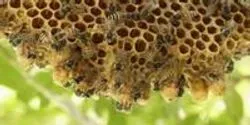Biological Sciences

Breakthrough in genetic engineering could advance study of arrhythmias and heart conduction, say researchers at NYU Langone Medical Center.

A recent study published in the BMJ came to the conclusion that, "exaggeration in news is strongly associated with exaggeration in [academic] press releases."

Wayne State University part of international collaborative research team on study.

It was the yellow color of the solution, pulled from cauliflower, that set Frederick Crane’s hallmark achievement into its final motion.

Stem cells in early embryos have unlimited potential; they can become any type of cell, and researchers hope to one day harness this rejuvenating power to heal disease and injury. To do so, they must, among other things, figure out how to reliably arrest stem cells in a Peter Pan-like state of indefinite youth and potential. It’s clear the right environment can help accomplish this, acting as a sort of Neverland for stem cells. Only now are scientists beginning to understand how.

Cloudy tap water may have a greater effect for California’s rural immigrants than merely leaving behind a bad taste, according to a new policy brief released by the Center for Poverty Research at the University of California, Davis.

Problem: At the crossroads of understanding cell physiology, disease pathology and etiology lies cell metabolism, encompassing the cellular set of life-sustaining chemical transformations. Dysregulation of cell metabolism is now known to be a common component of cancer, immunology, obesity, diabetes, and neurodegenerative disease. This is because mitochondrial respiration and glycolysis are the major sources of life-sustaining and biosynthetic processes for the cell, specifically energy in the form of ATP (adenosine triphosphate) and macromolecules such as membranes, nucleotides, transporters, organelles, etc. Metabolic pathways are increasingly considered as potential therapeutic targets. Therefore, the ability to measure and understand cellular bioenergetics can provide valuable insight into disease and contribute to the potential identification of drug discovery targets.

Forest Rohwer, PhD, is a professor in the Department of Biology at San Diego State University. He is a fellow of the American Academy for Advancement of Science (AAAS), American Academy of Microbiology
(AAM), and Canadian Institute for Advanced Research (CIFAR). He led the development of viromics,” which involves isolating and sequencing the RNA/DNA from all the viruses in a sample. From this data, it is possible to determine what types of viruses are present and what functions they are encoding. Dr. Rohwer uses viromics to study ecosystems ranging from coral reefs to the human body and has shown that most genomic diversity on the planet is viral. Dr. Rohwer has published more than 150 peer-reviewed articles, was awarded the International Society of Microbial Ecology Young Investigators Award in 2008, and is listed as one of the World’s Most Influential Scientific Minds (Thomson Reuters 2014).













